Do you feel like your or your teammates’ communication efforts often get misunderstood?
Whether you’re working on site, or in a hybrid or remote model, good interpersonal communication is essential for building a strong team and achieving business success.
In this article, we’ll cover:
- The definition of interpersonal communication,
- The styles and types of interpersonal communication, and
- The importance and benefits of good interpersonal communication.
By the end of this article, you’ll find out how to improve interpersonal communication skills and turn them into your career superpower.
Let’s get to it!

- Aside from verbal and nonverbal communication, interpersonal communication includes visual communication and active listening.
- Interpersonal communication enables effective information exchange and building relationships, and it fosters collaboration and productivity.
- To improve interpersonal communication, you should start with self-analysis to figure out what you and your team need to work on. You can then observe others and consider applying their way of interacting. Schedule regular team meetings to promote team cohesion and get to know the details of different communication styles. Finally, you should learn to remain in control of your emotions.
Table of Contents
What is interpersonal communication?
Interpersonal communication is the exchange of verbal and non-verbal information between two or more people.
In this process, people exchange thoughts, opinions, feelings, ideas, and information.
To develop a smoother interpersonal communication in your team, all individual members will need to balance their different communication preferences and find a way to make them work together.
To manage this, you can start by understanding the types of interpersonal communication.
What are the types of interpersonal communication?
The 4 main types of interpersonal communication are:
- Nonverbal communication – body language, eye contact, facial expressions, signs, or similar,
- Verbal communication – using words to convey information, including spoken language, and even written communication by some definitions,
- Visual communication – conveying information through images, charts, and any other visual aids, and
- Active listening – a unique combination of multiple skills that builds trust and makes the speaker feel heard and understood.
Enable seamless team communication with Pumble
The most valuable interpersonal communication skills
Interpersonal communication skills are abilities that people develop to effectively interact with others.
Whether you’re just entering the workforce or you’ve been working for decades, good interpersonal communication skills will always put you at an advantage in the workplace.
Even if interpersonal communication isn’t really your strength — don’t worry. Good communicators are made, not born.
The most important interpersonal communication skills in a workplace are:
- Active listening,
- Being receptive to feedback,
- Conflict management,
- Dependability,
- Empathy,
- Leadership skills,
- Negotiation, and
- Teamwork.
Let’s take a closer look at each one and how each of them can be improved to become a more effective communicator.
Skill #1: Active listening
Fairly often, instead of listening to our interlocutor carefully, we think about what we’re going to say next, where we should go for lunch, or something else completely unrelated.
Active listening requires being fully immersed in the conversation and thinking about what the person is saying — not just waiting for your turn to talk.
To become a better listener, you should pay attention to the following:
- Make eye contact. That shows you’re present and attentive. However, make sure to look away from time to time, as constant eye contact can be intimidating.
- Notice the other person’s body language. Sometimes, nonverbal cues tell you more than words can.
- Don’t interrupt. Regardless of whether you remembered something very important or if you came to a conclusion: wait for the other person to finish. Interrupting is rude and can be frustrating for the speaker.
- Clarify what the other person is saying. You can ask questions, paraphrase, or summarize what has been said to make sure you’re on the same page.
- Stay focused. Concentrate on what the person is saying and try to understand where they are coming from.
- Ask open-ended questions. Contribute to the conversation and try to find common ground with the speaker.
Developing good active listening skills will make your colleagues feel valued, and you will understand your interlocutors much better than before. In other words, mastering active listening will improve your interpersonal communication efforts and help you form stronger professional bonds.
Skill #2: Giving and receiving feedback
Being criticized rarely feels good, but it’s important to learn to manage our emotions when receiving feedback and look at our work as objectively as we can.
When you receive feedback, try to:
- Step back and process it. Try not to act on impulse.
- Think about where feedback is coming from. Just as you shouldn’t automatically reject feedback, you shouldn’t automatically accept it either. Ask yourself, does that person have the credibility and knowledge to give valid criticism? Do other people think so too?
- Say “Thank you” professionally. You can also explain your point of view, but don’t argue or get defensive.
With that in mind, if you’re in a position to give feedback, it’s important to be empathetic.
We talked to Jamie Levin, a communicator consultant with over 10 years of experience in corporate communication. She emphasized the importance of putting ourselves in the audience’s shoes while giving feedback.

“When giving feedback, it is extremely important to consider your audience and how they receive information. Are they easily offended? You might need to soften the blow. Do they prefer one-on-one communication? Avoid providing feedback in a group. So much of the acceptance of feedback is dependent upon our interpersonal communications skills.”
Simplify the feedback process with Pumble
🎓 Pumble Pro Tip
For further reading on how to give or ask for feedback in the workplace, check out our blog posts:
Skill #3: Conflict management
Conflict management is the practice of resolving conflicts sensibly and efficiently. Conflicts are often unavoidable, so being able to manage and solve them is an incredibly valuable skill to have.
To start, here are a few steps you can follow:
- Understand the source of the conflict.
- Don’t add fuel to the fire. Try to de-escalate the situation.
- Estimate whether to talk to people alone or together. Your decision will depend on the temperaments of those involved and the effect each approach might have.
- Listen carefully. Make sure everyone gets an opportunity to share their side of the story.
- Analyze the conflict. What is the conflict really about? What could be the motivation for both parties to settle the conflict? What conflict management strategies have been tried in the past and how successful were they?
- Promote patience and understanding.
- Try to determine the solution that works for everyone.
🎓 Pumble Pro Tip
If you want to get better at conflict resolution, check out the following blog:
Skill #4: Dependability
Being dependable means you can be trusted to do something and people can count on you. A study by Google on team effectiveness, known as Project Aristotle, lists dependability among the best employee qualities.
How can you become a more dependable person? A few things you can do are:
- Always show up on time,
- Never miss a deadline. If something unexpected happens and you can’t make it, let your team know as soon as you can.
- Follow the company’s policies — they are there for a reason.
- Make sure your work is always high quality. This is more important than making deadlines at all costs.
- Offer help to your teammates.
- Be consistent — what you say and what you do should always be in alignment.
Being dependable is an invaluable skill to any team or business. Being someone people can rely on and trust:
- Builds your reputation and
- Increases how you are valued by your team in the long run.
Skill #5: Empathy
Simply put, empathy is the ability to connect with and understand other people, as well as recognize what the other person is feeling or experiencing.
But, what is the connection between being able to put yourself in others’ shoes and being successful in business?
According to Forbes, empathy helps us better understand people, which also helps us communicate more effectively, as well as be innovative and competitive in business.
The article also states that you can connect and establish an environment of interest by developing an empathetic approach in your business — as this allows others to feel heard and welcomed. Considering other viewpoints without being judgmental will allow you to hear and pick up fresh ideas that can have a profound effect on improving your team.
🎓 Pumble Pro Tip
To learn more about empathetic communication and how to develop empathic communication skills at work, read our blog post:
Skill #6: Leadership skills
Effective leaders are a crucial part of any successful organization — they create a productive work environment, increase employee engagement, and motivate everyone to do their best.
If you aim to be a great leader, some of the qualities you have to possess are:
- Efficient problem solving,
- Excellent communication skills,
- Ability to motivate others,
- Integrity,
- Reliability,
- Resilience,
- Good decision-making skills,
- Ability to teach and mentor, and
- Emotional intelligence.
Not an easy job — but that’s why good leaders are so valuable.
Lead your team effortlessly with Pumble
Skill #7: Negotiation
Whether you want a raise at work or you’re looking to get a discount for something in the local shop, negotiation skills are something all of us can benefit from in the workplace and outside of it.
According to Harvard Business School Online, the key principles of successful negotiation are:
- Effective communication,
- Emotional intelligence and the ability to control your emotions,
- Planning ahead and having a clear idea of what you want to achieve,
- Creating value — ideally, coming up with the solution that benefits both parties,
- Strong strategy — defining your role, understanding your value, and understanding the other person’s vantage point, and
- Reflection — thinking about your past negotiation and identifying areas that need improvement.
Knowing how to negotiate better will develop the very foundation of your interpersonal skills by compelling you to take different points of view into account. To negotiate successfully, you will have to consider various perspectives at the same time and strive to create a win-win scenario. This is in no way an easy task, but practice makes perfect!
Skill #8: Teamwork
For a lot of jobs, one of the most crucial interpersonal skills is being able to function within a team.
Being good at teamwork requires:
- Showing empathy,
- Communicating clearly and transparently,
- Being accountable and responsible,
- Adaptability to newly formed situations,
- Encouraging others to share their input and listening well,
- Being honest but respectful,
- Wanting to help others, and
- Having a collaborative instead of a self-centered approach.
If one of your teammates is struggling with some of these qualities, try to analyze what they could work on to improve, and how. A good starting point is to promote behavior opposite to the detrimental one, and lead with a positive example.
🎓 Pumble Pro Tip
To find out which important factors contribute to collaboration and how to foster teamwork, read our article:
Foster team collaboration with Pumble
What are the elements of interpersonal communication?
In order to improve interpersonal communication in your team, it can be helpful to look at the communication process from various perspectives.
For example, you might find that external factors are the main issues in your team. Alternatively, maybe one of your teammates isn’t that good at giving and receiving feedback, and that’s what’s causing trouble in your team communication.
Every communication situation between two or more people includes the following elements:
- Communicators – the people exchanging information,
- The message – the core idea being shared and discussed,
- Noise – factors that obstruct the meaning of the message (a noisy environment, complicated words, misunderstood body language, etc.),
- The communication channel – the medium by which the message is transferred (in-person conversation, video call, communication app, phone call, etc.),
- Context – elements such as time, place, culture, or roles of the communicators, and
- Feedback – the response of the person receiving the message.
Each of these elements can be a potential source of friction during communication. Understanding where the problem occurs can help you address any communication barriers that hurt your teamwork.
🎓 Pumble Pro Tip
For further reading on the communication process make sure to check out our blog post:
5 Tips to improve interpersonal communication in the workplace
Interpersonal communication is vital for success, both on an individual and organization-wide level.
If it’s not your or your team’s biggest strength, the 5 main tips to improve interpersonal communication in the workplace are:
- Find out what you or your team need to improve,
- Work on your communication skills by observing others,
- Schedule regular team meetings and team-building activities,
- Learn to control your emotions, and
- Understand different communication styles.
Let’s dig deeper into each one of these tips.
Tip #1: Find out what you or your team need to improve
Before you do anything, you need to (as objectively as you can) figure out what your team needs to work on.
Ask yourself questions like:
- Do any of your team members have trouble initiating conversations?
- Is anyone too hot-headed and often says something they don’t actually mean?
- Does anyone struggle with listening attentively?
- Is anyone passive-aggressive? How often do they interrupt others?
Pay attention to the way your team interacts and see what you can change. You can even speak to the rest of the team and hear their opinions on what could be changed to improve your team dynamics.
Tip #2: Work on your communication skills by observing others
As an introvert who worked hard to develop my communication skills, I can say that these two things are game-changers:
- Observing what effective communicators do and how they interact, and
- Practicing my communication skills.
Think about people in your surroundings who have great communication skills. What do they do? How do they interact with others? How do they behave in certain social situations? What does their body language look like?
When you get the chance, try to apply some of the things they do. Be patient — it takes a lot of practice.
Also, don’t try to do 10 things at once — start with one. For example, make an effort to “open up” your body language. When you get comfortable with that, move on to the next communication skill.
Tip #3: Schedule regular team meetings and team-building activities
In order to understand your team better, you can schedule regular team meetings and team-building activities.
This is especially important if you’re working remotely. It’s hard to talk to someone in a relaxed way if you see them once every two months (and even then, only from the shoulders up).
The more you see each other, the more comfortable you will get around each other, which will result in better and more open communication.
Schedule regular meetings with Pumble
🎓 Pumble Pro Tip
If you’re looking for ideas for team-building activities and games, check out:
Tip #4: Learn to control your emotions
If you are emotional, stressed out, or upset, it’s unlikely that you’ll be able to hold a productive and efficient conversation.
And communication in the workplace should be just that — constructive and professional. Emotional outbursts are a no-go.
Learning to regulate your emotions is a long and hard process, but for a quick fix, you can:
- Identify your emotions by asking yourself the following questions:
What are you feeling right now?
What made you feel that way?
What do you want to do about these feelings? (e.g. scream, cry, vent to someone, etc.)
Is there a better way to deal with these emotions? - Accept your emotions. Repressing them is not only unproductive but also unhealthy.
- Give yourself some space to process what you’re feeling.
- Learn a deep breathing technique that will help you calm down.
Tip #5: Understand different communication styles
Just like people have different personalities, they also have different ways of communicating.
Your extroverted coworkers might prefer talking face-to-face or via video calls, while emails and team collaboration software might work better for the introverted part of the team.
Use Pumble to unify different communication styles
Furthermore, some people rely on assertive communication, while others can be passive-aggressive. Some are talkative, while others are quiet.
If you want to take your communication skills to the next level, you have to make an effort to understand the way people around you communicate. Doing that might help you understand why people are the way they are — perhaps you’ll find out that that one coworker doesn’t dislike you, they just dislike talking.
Get to know your team and their individual communication styles — it will definitely help you interact and collaborate better.
🎓 Pumble Pro Tip
If you are curious to learn more about different communication styles, our guide might help:
Interpersonal communication styles
To better understand the potential misalignments in your team’s communication, you can also consider the differences in interpersonal communication styles of your team members.
The issue could be that your team members are simply using an inappropriate communication style for situations where they aren’t helpful, thus creating unnecessary friction.
In their book Management: Function and Strategy, Bateman and Zeithaml identified 6 styles of interpersonal communication that are used in business settings:
- Controlling,
- Egalitarian,
- Structuring,
- Dynamic,
- Relinquishing, and
- Withdrawal.
Each one of these has its use in certain circumstances. Let’s take a closer look at each one, so you can see if your team benefits from them or misuses any.
Style #1: Controlling
Controlling communication style involves one-way communication and is typically used by those in power. The purpose of this style is to direct others or give orders. This style of communication is the most useful during times of crisis.
For example, managers might need to use a controlling communication style while giving instructions on how to complete tasks.
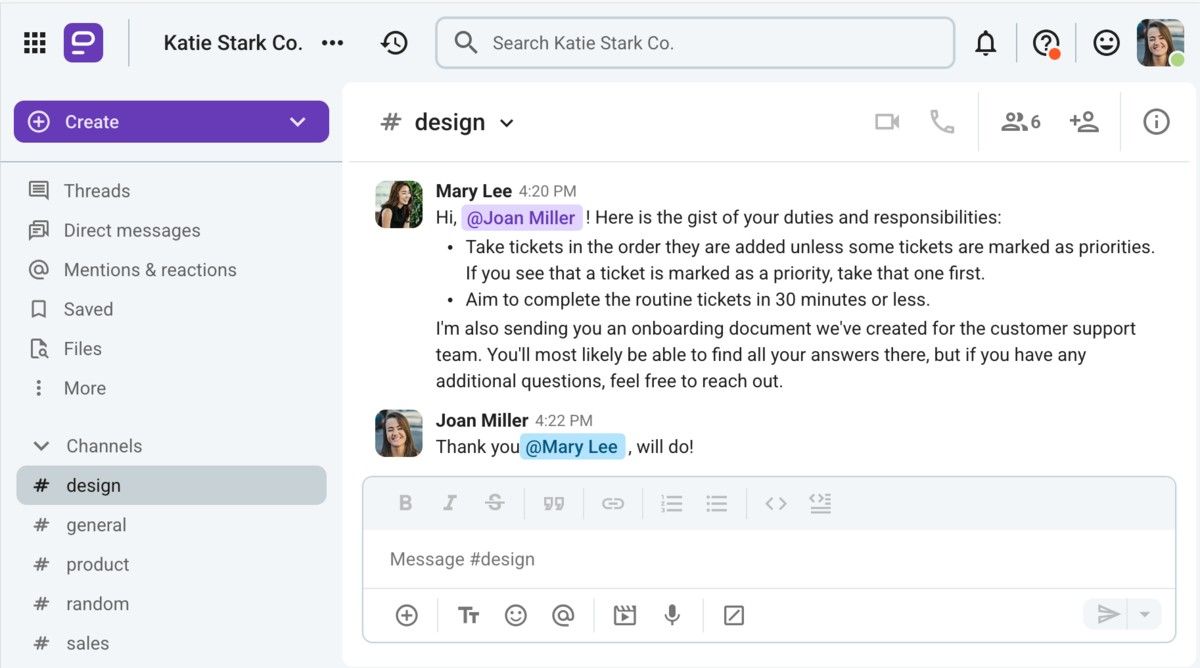
A bad use of this communication style can occur between two colleagues on the same hierarchy level – where one is unnecessarily strict to an individual or in a group.
Style #2: Egalitarian
Egalitarian communication style is two-way, interactive, and cooperative. It encourages feedback and sharing thoughts and opinions.
Due to its collaborative nature, this style is often more effective than the controlling one, especially in environments that require teamwork.
For instance, you can use the egalitarian communication style to discuss the status of the current project with your teammate.

A misuse of this style often involves managers that are too lenient, even when dealing with crisis situations, which can result in a series of conflicts.
Effectively handle crisis situations with Pumble
Style #3: Structuring
Structuring communication style’s purpose is to:
- Establish schedules,
- Impose organization, and
- Inform everyone of goals and procedures in the company.
It works best when it’s combined with the egalitarian style — those two together create a balanced and productive company culture.
For example, managers use the structuring communication style when sharing company policies and schedules.
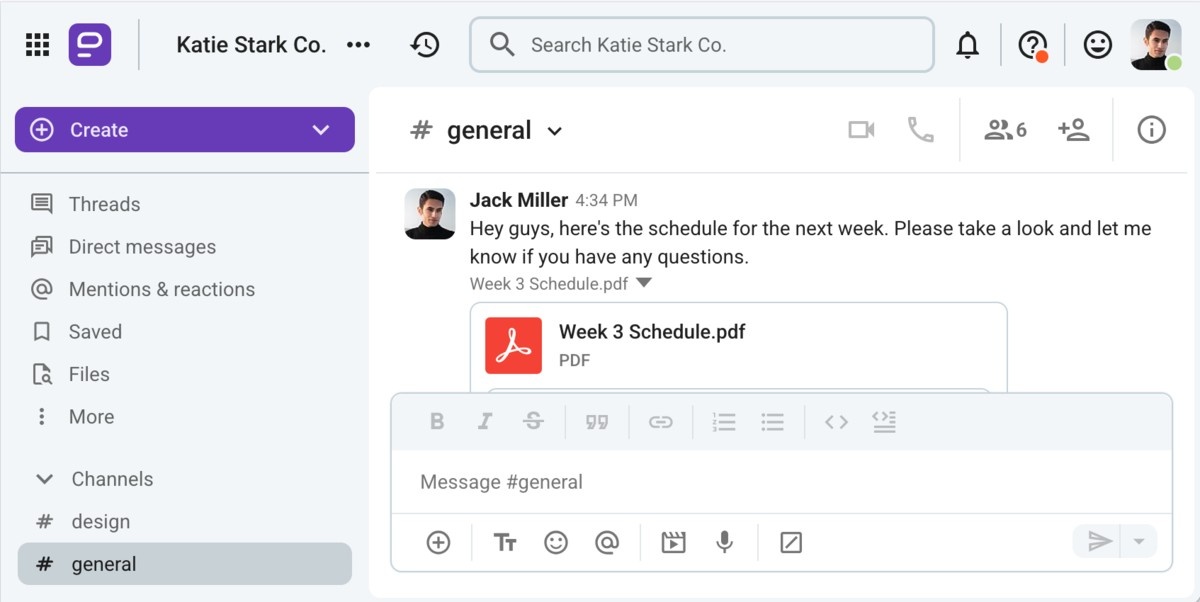
A bad use of this communication style would be someone unqualified or unauthorized giving orders without regard for the chain of command or respect for the team.
Style #4: Dynamic
Dynamic communication style is high-energy, with a goal to motivate and inspire others to do something.
It’s typically used by managers who want to energize and boost their team members’ motivation.
However, make sure to use it wisely — it can be ineffective if your audience doesn’t have enough knowledge or experience to successfully take action.
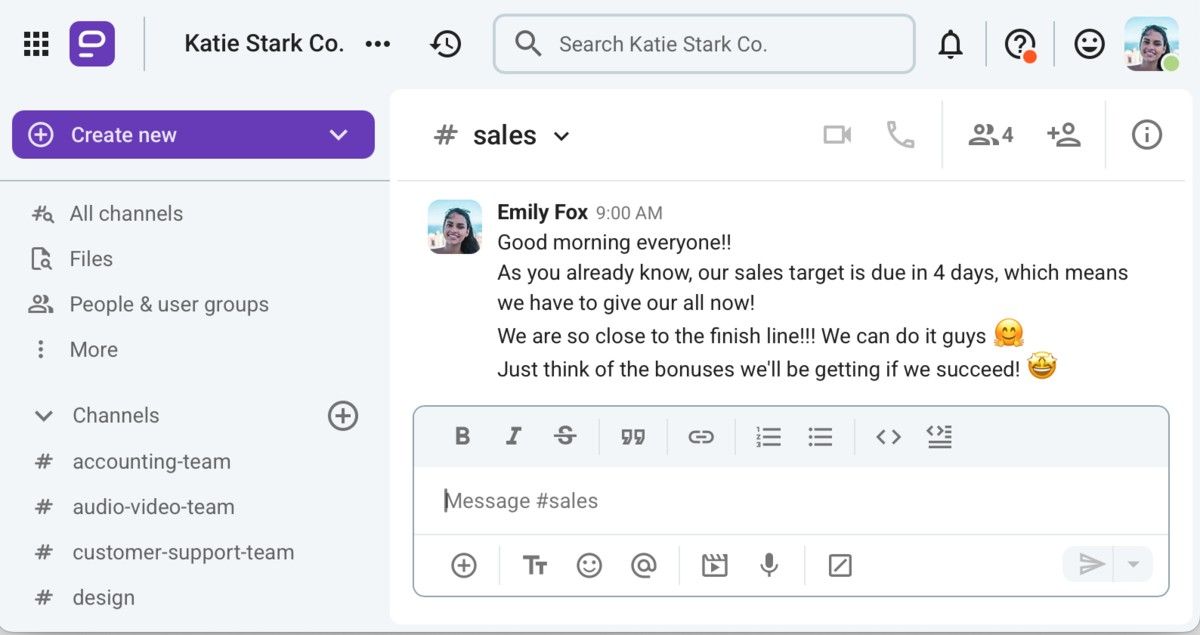
A bad use of this communication style involves someone being overly enthusiastic without being realistic. This often raises eyebrows, especially if the environment is already negative.
Best advice here would be to “read the room” when opting for this communication style.
Style #5: Relinquishing
Relinquishing communication style implies being highly receptive to the ideas of others — sometimes, to the point where others take the initiative, while the manager listens and makes comments here and there.
This style is effective when team members are dependable, responsible, and knowledgeable.
For example, you can use the relinquishing interpersonal communication style to ask your teammates to share impressions about the first draft of a new website design you created.
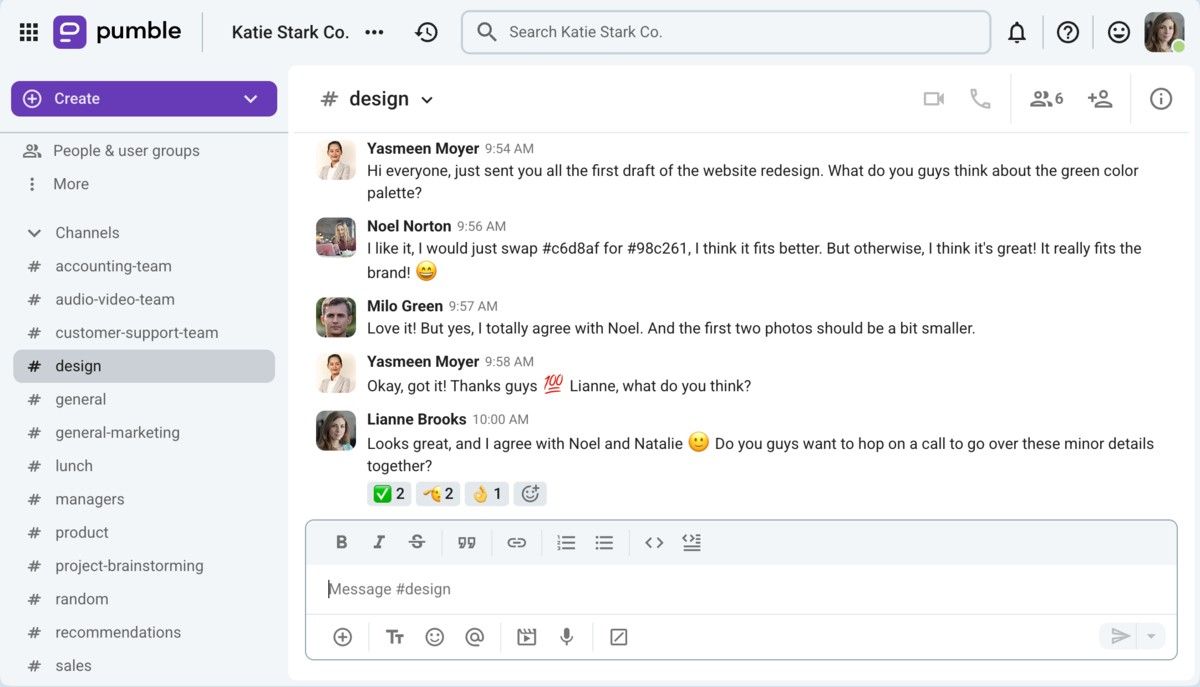
Keep in mind that the relinquishing style can backfire. For example, accepting detrimental or half-baked ideas just for the sake of agreeing and without looking at the broader implications.
Discuss and develop ideas with Pumble
Style #6: Withdrawal
Withdrawal communication style is best described as — lack of communication. It can be a result of:
- Disinterest,
- Passiveness, or
- Unwillingness to participate in discussions.
For example, if you are about to share your ideas on a new website design, and your manager is unwilling to listen to what you have in mind, they use a withdrawal communication style.
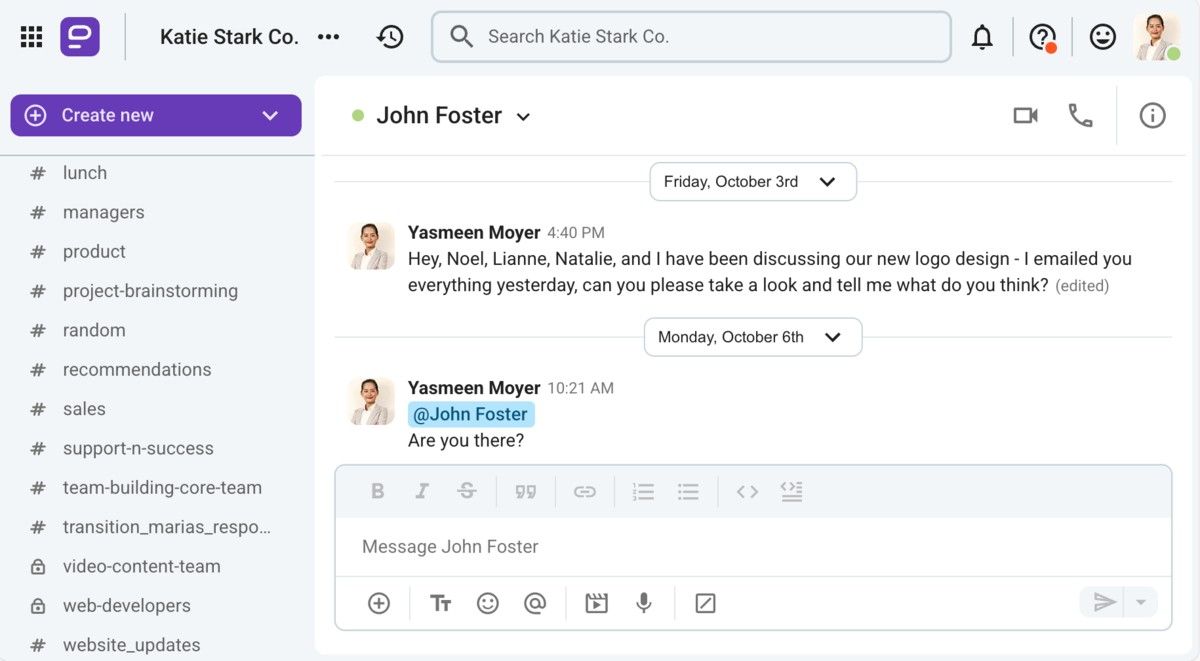
Since this is mostly considered a “bad” style to begin with, a good use of this communication style would be when encountering an extremely aggressive communicator where avoidance is the best option.
Why is interpersonal communication important at work?
Let’s take a closer look at specific reasons successful teams always focus on developing strong interpersonal communication.
Reason #1: Interpersonal communication boosts productivity and efficiency
Good communication results in better information flow.
When done right, interpersonal communication has a big role in sharing data and knowledge quickly and efficiently.
And, when you have all the information you need easily available, you can focus on doing your job — thus being more productive.
In fact, so many leaders recognize this, that, according to the GMAC Corporate Recruiters Survey, interpersonal/teamwork skills are the 3rd most valued employee trait in the US, right after problem solving and communication skills.
🎓 Pumble Pro Tip
For more facts about workplace communication, check out:
Reason #2: Interpersonal communication facilitates problem solving
When it comes to problem solving and decision making, good interpersonal skills are an invaluable asset.
Possessing such skills allows people to:
- Adequately express themselves,
- Precisely describe the problem,
- Discuss, and
- Build on each other’s ideas.
Open communication also ensures that the solution will benefit everyone involved (or at least try to).
Everyone should feel valued and comfortable sharing their input — if they aren’t, brainstorming sessions won’t be a big success.
Arguably, the best problem-solving technique is preventing problems — and good communication prevents potential miscommunication, misunderstandings, and confusion down the road.
Simplify communication with Pumble
Reason #3: Interpersonal communication builds mutual trust
Regular interpersonal communication builds trust among coworkers. As stated in an article in the International Journal of Business and Management: “Trust and commitment do not just happen; they are forged and maintained through effective communication.”
Trusting people you work with comes with many benefits, including:
- Decreased levels of stress and hostility,
- Increased productivity and efficiency,
- Giving and receiving support,
- Increased morale and motivation,
- Decreased micromanagement, and
- Higher employee retention.
Reason #4: Interpersonal communication forms bonds and maintains relationships
No man is an island — especially in business. Networking can open doors you didn’t even know existed, boosting your career better than any resume can.
Making (and maintaining) new contacts opens you up to new resources and fresh ideas — you may even be offered a great business opportunity before others. Your connections can also provide you with referrals, mentoring, training, and other opportunities for professional growth.
Moreover, you may develop some new, interesting friendships.
🎓 Pumble Pro Tip
To learn more about how to network effectively and how to network if you’re shy, check our blog post:
All things considered, interpersonal communication in the workplace is essential for effective exchange of information, which consequently boost our productivity and help us solve problems.
As a result, it helps us build trust and maintain healthy relationships at work.
Develop good interpersonal communication with Pumble
If you’re looking for a way to implement interpersonal communication skills and get your team to collaborate efficiently, a reliable business communication tool can supercharge your progress.
For this purpose, look no further than Pumble.
Pumble is an all-in-one communication and collaboration tool with features that allow you to foster good interpersonal communication:
- Channels – to improve organization by distributing relevant information to specific teams and subteams,
- Threads – for giving immediate structured feedback within a message reply,
- Group video meetings – to see all conversation participants at once and encourage active listening,
- Scheduled messages – to perfectly time your messages, improve asynchronous communication, and promote understanding, and
- Advanced search capabilities – to revisit discussions you were part of and analyze them for further refinement.
Pumble will help you practice and develop interpersonal communications skills with your team effectively and seamlessly, every day.
Streamline your team’s communication — try Pumble by CAKE.com today!









